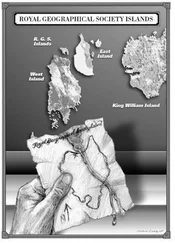As commander on the ground of a hated war, Abrams grew to love the Army and its soldiers all the more. “In a changing world, changing times and changing attitude and the various political motivations that have thrust themselves upon our country,” he told the First Infantry Division in their last hours before returning home, “[you] represent a constancy of those essential virtues of mankind: humility, courage, devotion, and sacrifice. The world is changed a lot, but this division continues to serve as it had in the beginning. I choose to feel that this is part of the cement and the rock and the steel that holds our great country together.”
Abrams’s passion as Army chief at the end of Vietnam was to manage the nation’s demobilization from that conflict in a way that protected the military. Even as wartime appropriations dried up and the size of the Army shrunk dramatically and the now-hated draft was abolished, Abrams wanted a big national investment in military readiness. He had served in three American wars, and he described how calling up an unprepared Army out of an unprepared nation meant shedding too much American blood when it came time to fight: “We have paid, and paid, and paid again in blood and sacrifice for our unpreparedness…. I don’t want war, but I am appalled at the human cost that we’ve paid because we wouldn’t prepare to fight.”
His solution was elegant in its simplicity and its financial efficiency. Under Abrams’s Total Force Policy, the Guard and Reserves would no longer be shelters to avoid service but rather integral parts of the nation’s fighting capacity. It would be operationally impossible to go to war without calling them up. Abrams wove the Guard and Reserves into the fabric of the active-duty military; he made those in-your-neighborhood citizen-soldiers responsible for functions without which we could not wage a major military campaign. And in weaving the Guard and Reserves into the active-duty military, he also wove the military back into the country.
John Vessey, who worked under Abrams during the restructuring, remembered the general’s central focus: “He thought about [the kind of nation America was] an awful lot, and concluded that whatever we’re going to do we ought to do right as we are a nation. Let’s not build an Army off here in the corner someplace. The Armed Forces are an expression of the nation. If you take them out of the national context, you are likely to screw them up. That was his lesson from Vietnam. He wasn’t going to leave them in that position ever again.”
And so the political threshold for going to war was raised. The Abrams Doctrine—the Total Force Policy—put American politicians in the position of being “designed out” of waging war in a way that was dislocated from the everyday experience of American families. Remember Russell’s advice to Johnson when the president wondered whether he’d have to address a joint session of Congress about a huge escalation in Vietnam: “Not as long as you don’t call up any Reserves I wouldn’t.” With the Abrams Doctrine, calling up the Reserves would no longer be optional, and therefore neither would that pilgrimage to Congress. The president’s hand was forced: if America was to fight a war, the life of that “airplane driver for United” would have to be profoundly disrupted, civilians would have to be pried out of their civilian jobs. What Johnson had resisted as “too dramatic” in the last war would become the political price of admission to the next one.
The loudest story of the summer and fall of 1973 may have been the Senate slowly tightening the noose of Watergate around President Nixon’s neck, but at the same time Congress was also busy writing “A Joint Resolution Concerning the War Powers of Congress and the President.” The War Powers Resolution of 1973 would be an explicit reassertion of the prerogative spelled out under Article 1, Section 8, “to fulfill the intent of the framers of the Constitution of the United States” that Congress—and Congress alone—had the power to declare war.
The framers had been voluble in their rationale for and in their defense of Article 1, Section 8. “The Constitution supposes, what the History of all Governments demonstrates,” wrote James Madison, “that the Executive is the branch of power most interested in war, and most prone to it. It has accordingly with studied care vested the question of war in the Legislature.” Even that suspected monarchist Alexander Hamilton saw the wisdom of keeping the power to declare war out of the hands of a single executive. Madison, Hamilton, and their fellow framers were building structural barriers against what they saw as the darker aspects of human nature. The lures to war—personal hatreds, political glory, material spoils, and the simple atavistic enthusiasm for violence—might be too enticing for one man to resist, and might be too easy to promote “by fixing the public gaze upon the exceeding brightness of military glory,” as a later congressman, Abraham Lincoln, put it, “that attractive rainbow that rises in showers of blood—that serpent’s eye that charms to destroy.” Madison wrote in his notes during the constitutional debates that Virginia delegate George Mason “was for clogging rather than facilitating war; but for facilitating peace.”
The framers clogged up the works by making the decision to go to war a communal one. By vesting it in the Congress—a large, slow-moving deliberative body of varied and often competing viewpoints—the Constitution assured that the case for any war would have to be loud, well argued, and made in plain view. The people’s representatives would be forced to take time and care to weigh the costs against the benefits.
This structure did not make the young United States what you’d call pacifist; we didn’t spread ourselves from sea to shining sea on high ideals and impeccable manners alone. But the wisdom of erecting high barriers to war making traveled unimpeded through early generations of Americans. In his first term in Congress, Abraham Lincoln reiterated the founding principle with a low-born frontiersman’s understanding of who pays the costs of martial élan: “The provision of the Constitution giving the war-making power to Congress was dictated, as I understand it, by the following reasons: kings had always been involving and impoverishing their people in wars, pretending generally, if not always, that the good of the people was the object. This our convention understood to be the most oppressive of all kingly oppressions, and they resolved to so frame the Constitution that no one man should hold the power of bringing this oppression upon us.”
In 1973, the successors of that frontier congressman had just had a painful refresher course in the perils of lowering the barriers to war. They had allowed Johnson to exercise tremendous prerogative; he’d shoved more than half a million soldiers into Southeast Asia without taking his case through Congress and the American people. So in 1973, the United States Congress reasserted itself. It passed legislation to raise and reinforce the structural barriers to a president waging his own wars. The post-Vietnam Congress wanted no future president to be able to act with that sort of impunity. (As the crotchety old Justice Hugo Black would remind folks who complained about the roadblocks to criminal prosecution embedded in the Constitution’s Bill of Rights: “They were written to make it more difficult!”)
The War Powers Resolution of 1973 was an imperfect law. But by passing it, the legislative branch was putting the executive on notice—it no longer would settle for being a backbencher on vital questions of war and peace. If the president wanted to execute a military operation ( any military operation), he had to petition Congress for the authority to do so within thirty days; if Congress didn’t grant explicit authorization, that operation would have to end after sixty days by law. The Oval Office would no longer have open-ended war-making powers.
Читать дальше












